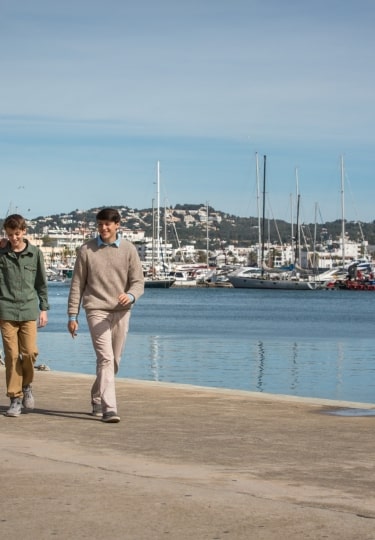The best time to visit Ibiza is the months of May, June, and September. This is when you’ll be able to bask in the warm sunshine with little rainfall. The climate is perfect for exploring the walled citadel of Ibiza Town, visiting pretty rural villages and hippie markets, and enjoying long lunches on the beach.
The peak summer season of July and August is also a great time to visit if you’re looking for the buzz of one of Europe’s most glamorous destinations. The sea is warm, the bars and restaurants are busy, and there’s a happy energy in the air.
Winters, in contrast, are much quieter. Unlike neighboring Mallorca, Ibiza is very much a seasonal destination, with many places closing down for winter as locals recharge their batteries after the busy summer.
Visiting Ibiza By Season
Summer
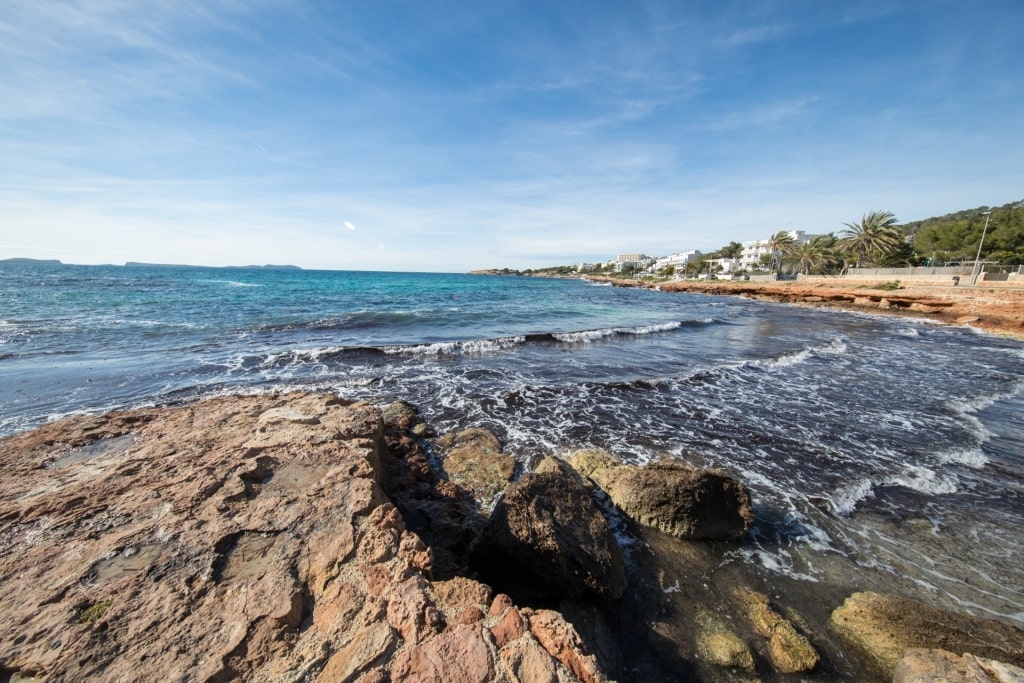
Ibiza
June, July, and August in Ibiza are the peak visitor months. The sun is shining and the island is in full swing. Beach clubs are busy, with DJs spinning tunes all afternoon before the sunset scene takes over. July is the driest month, with just 0.2 inches (5mm) of rain on average. Hot days are tempered by welcome sea breezes.
With average daily highs hitting 79.4°F (26.4°C), summer is a time to lounge on the beaches of Ibiza. Keep sightseeing to the morning and the early evening, when everybody emerges from their siesta ready for the night.
Fall
September and October are arguably the best time to go to Ibiza. The sea is warm, the island is still buzzing, and the sun is still shining. September is better than the height of summer if you want to tick off your list of things to do in Ibiza as the heat is less intense. It’s still perfect beach weather, though, with maximum temperatures of around 74.7°F (27.6°C).
October is the wettest month of the year, all things being relative in this dry Mediterranean climate. There are 2.8 inches (70mm) of rain on average—but that’s over just five days, so there’s still plenty of sunshine. This is when the island begins to wind down. By the time November comes, the skies are more overcast, with sunshine hours averaging just five per day.
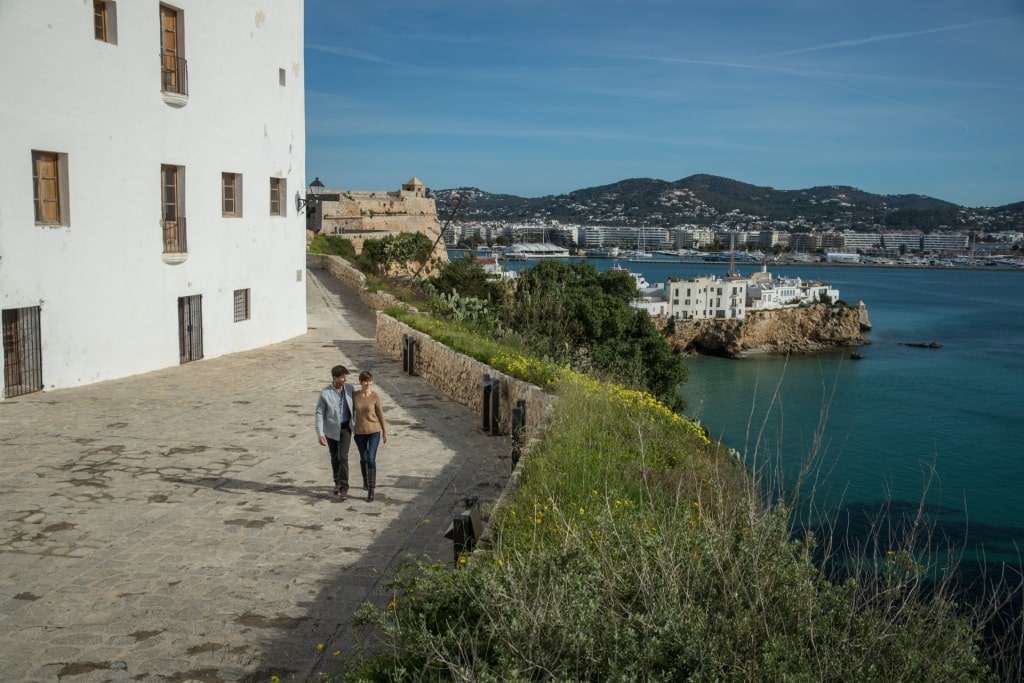
Old Town of Ibiza
Winter
Winter in Ibiza is very much the low season. In January and February, expect average daily highs of 53.3°F (11.8°C) and around 1.6 inches (40mm) of rain.
The nightclubs and beach clubs are closed and many locals who are involved in the hectic summer tourism industry take their own vacations. The island does have a resident population, of course, and there’s still a sense of community, but vacationers are thin on the ground.
Spring
Ibiza begins to wake up in early spring. The fields are strewn with poppies, fennel, and wild thyme, and the sleepiness of winter is shaken off. April and May see opening parties for the big nightclubs, bringing celebrities and party-goers to the island.
By May, you can expect just 1 inch (25mm) of rain, with daily highs hitting 65.9°F (23.1°C).
When Is Rainy Season?
Ibiza receives very little rain, but October, November, and December are statistically the wettest months, with rainfall peaking in October. Skies may be overcast as winter depressions pass through the Mediterranean. Temperatures below zero are extremely rare and snow is hardly ever seen.
When Is High Season?
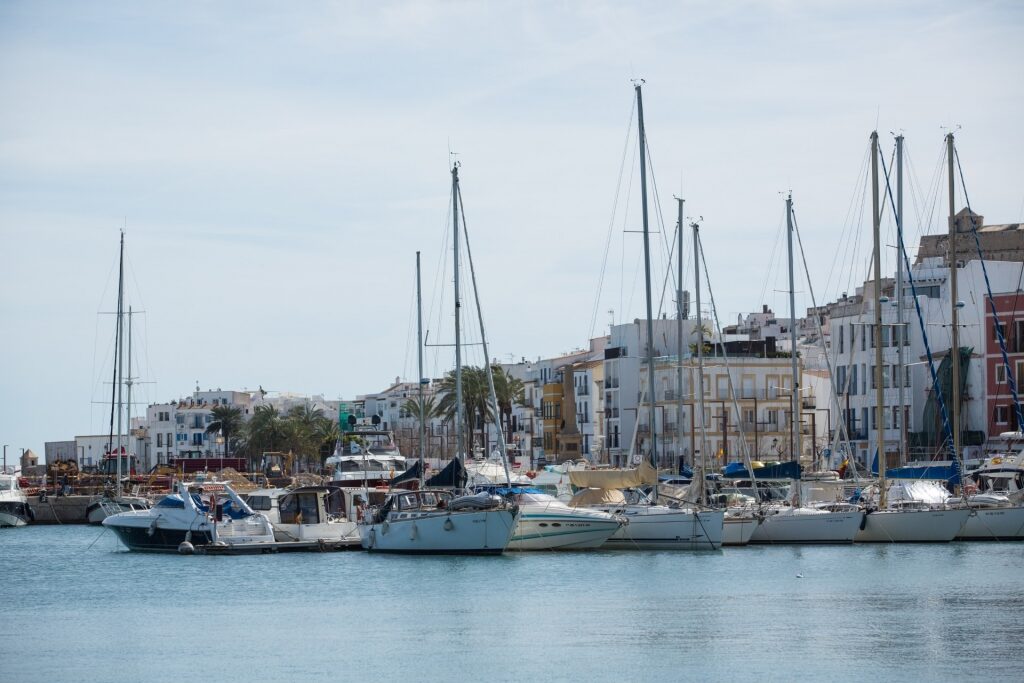
High season in Ibiza is the summer months, from May to September, with July and August the peak. Vacationers from all over Europe and beyond come for the beaches, the nightlife, the hippie-chic lifestyle, and the island’s magical vibe, even in its Old Town. Sleek yachts anchor offshore, their glamorous occupants arriving for long lunches and glittering nights.
High season is a good time to take the fast ferry across to sleepy Formentera, should you want a change of scene, not to mention the island’s white sand beaches and water the color of the Bahamas.
When Is Shoulder Season?
Ibiza’s shoulder season is late April and early May, as well as late September and much of October. The weather is mild during these months and the island is less busy. Most days, it’s still warm enough to eat outdoors and in September, the sea is the perfect temperature for swimming.
October sees the closing celebrations for the big beach clubs and nightclubs, with a last-minute rush of partygoers descending on the island.
When Is Low Season?
Low season in Ibiza is the quieter winter months, from December to March (Christmas and New Year’s excepted), when the weather is cool and many of the clubs and restaurants are closed for a break. There are still spikes of activity in winter; Carnival in February is a time of parades and festivity, while local festivals brighten up the quieter months.
Winter is a good time for hiking and cycling as there are no crowds and the island is at its greenest. Oranges and lemons hang plump on the trees and the almond blossom turns the countryside pinky white.
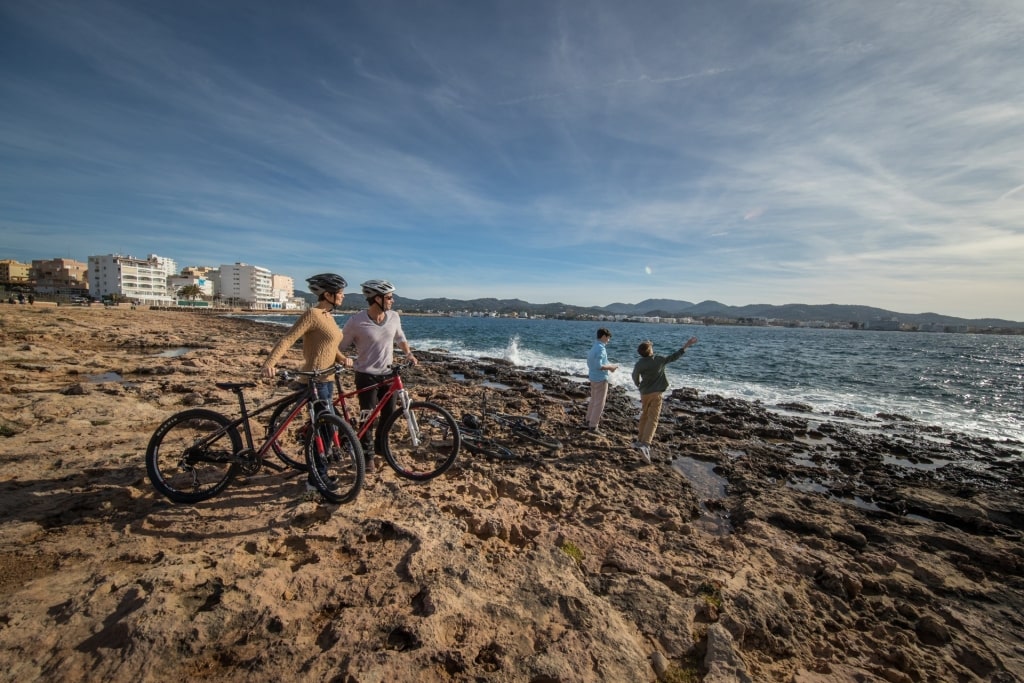
Ibiza
Experience the history, beaches, and bohemian lifestyle of Ibiza for yourself. Browse our Ibiza cruises and book your island adventure.
